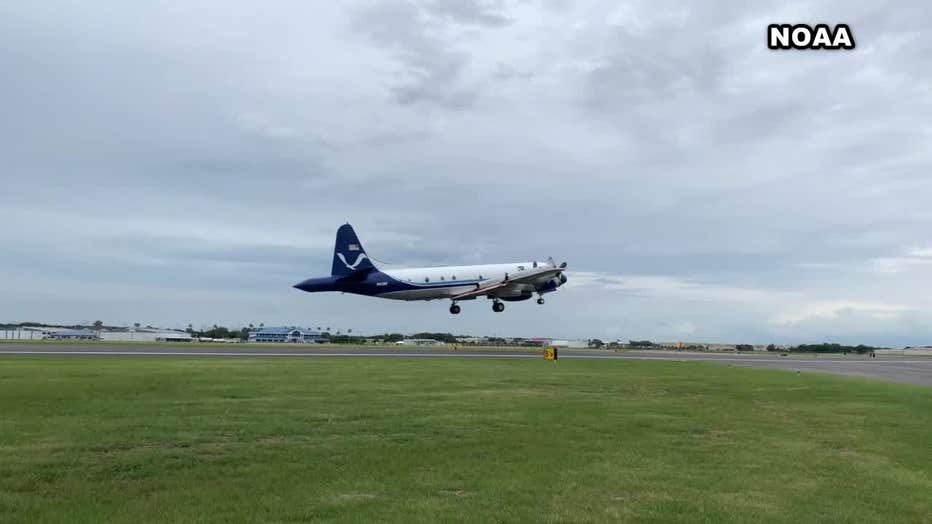NOAA Hurricane Hunters overhaul procedures to navigate storms, COVID-19
LAKELAND, Fla. - The NOAA Hurricane Hunters collect critical information used to forecast the path and strength of developing storms. Multiple crews worked around the clock flying directly into the path of Hurricane Laura before it made landfall.
They take off from Lakeland Linder International Airport and fly straight into one of the most destructive forces in nature. Crews of scientists, engineers and meteorologists measure hurricanes from the inside.
“You’re hanging on, the storm is putting the airplane where it wants to put it and you’re just trying to keep the wings level,” explained Commander Chris Sloan, the commanding officer at the NOAA Aircraft Operations Center.
The hurricane hunters were the first people inside Tropical Depression 13 and watched it quickly develop into Tropical Storm Laura.

“When it started approaching the western end of Cuba and still staying together, we knew Laura was going to be something special,” Sloan said.
Measurements are instantly transmitted to the National Hurricane Center to use in forecast models, providing a detailed look at each storm’s structure and intensity.
“We consider this year a marathon not a sprint,” said Sloan.
Slicing through the eyewall of powerful storms is not the only risk crews have to worry about this season. COVID-19 meant a complete overhaul of this critical job.
“We are trying to have to the maximum extent possible, absolutely no crew-to-crew interaction, because if one crew ended up getting infected, we don’t want to infect the other crew,” Sloan said.

Extra people are restricted from flights, and everyone in the hangar is tested at least once a week. The routine tests have already caught seven positive coronavirus infections.
The policies are strict because keeping crewmembers healthy is now the number-one mission.
“It has truly been a chess game, and we still have a long ways to go,” added Sloan
Hurricane season ends November 30.


